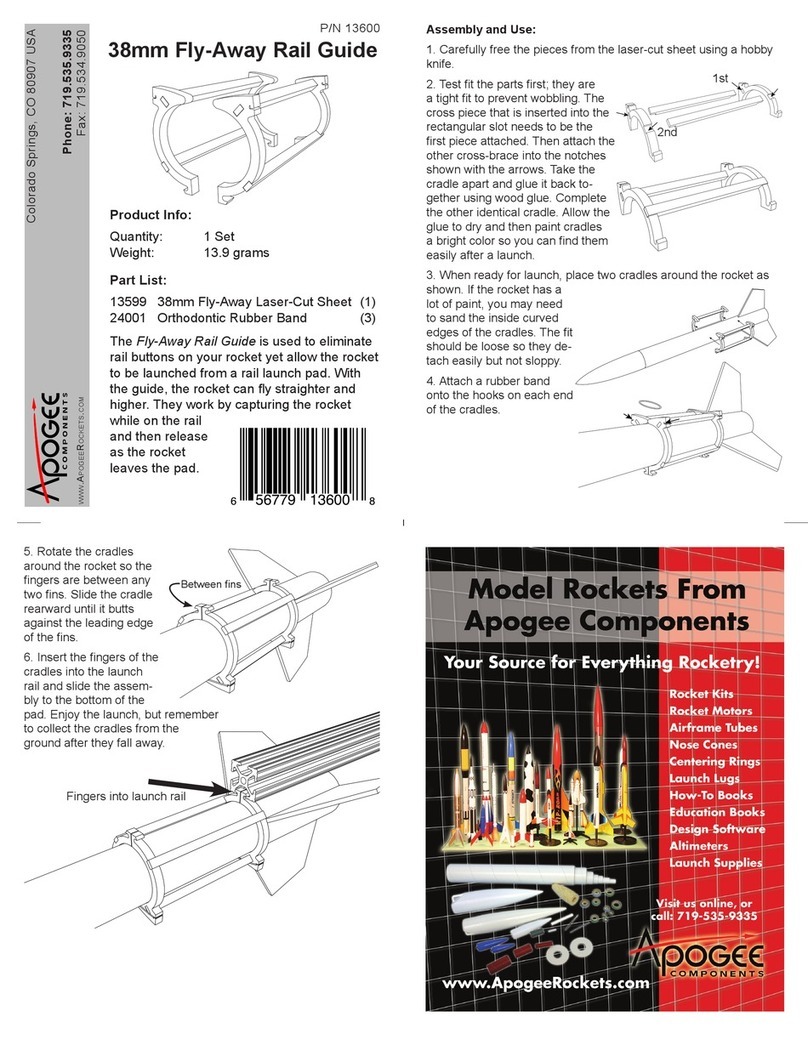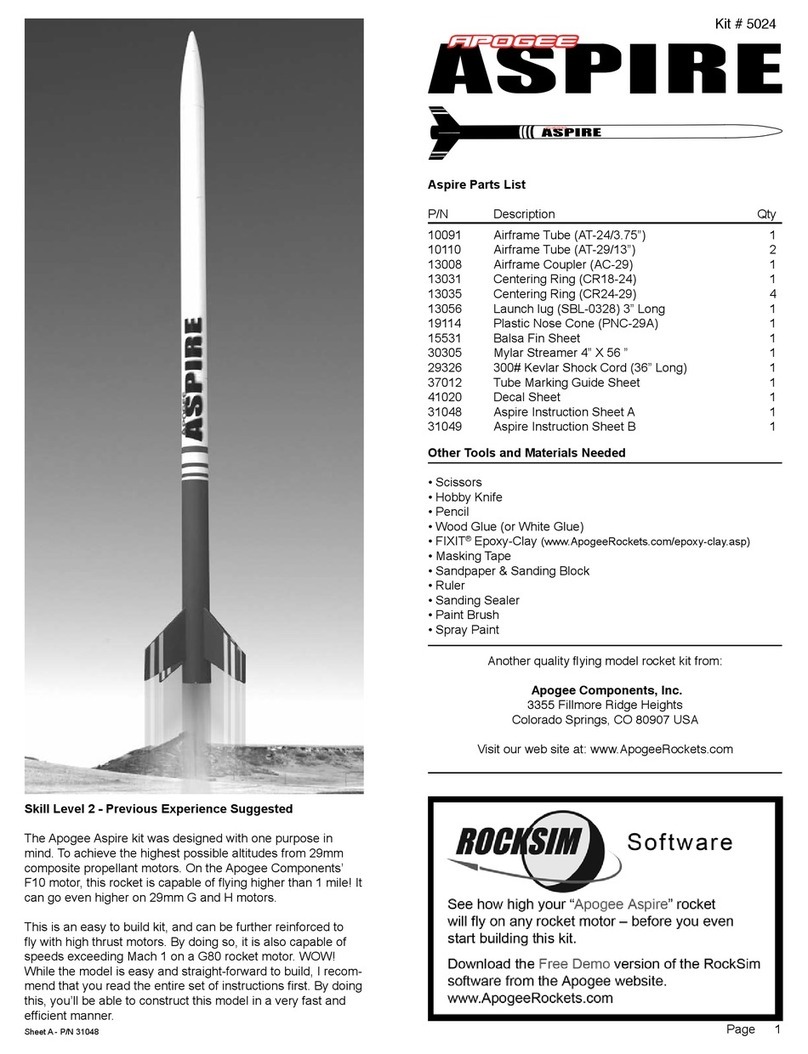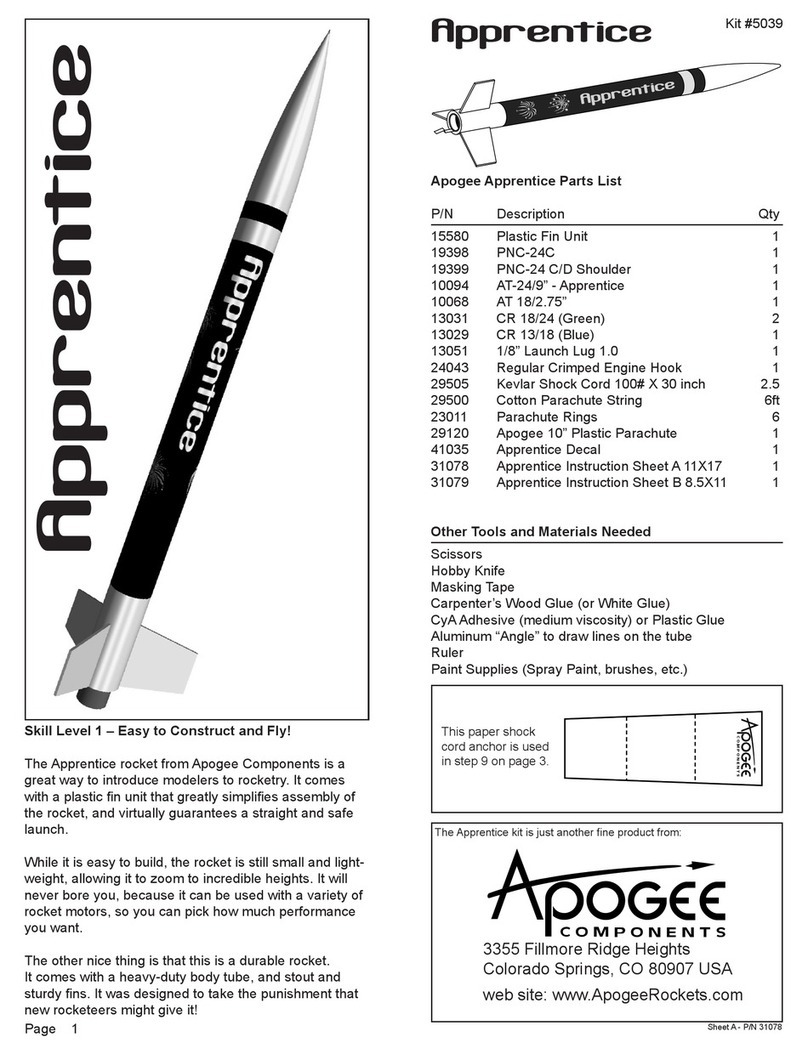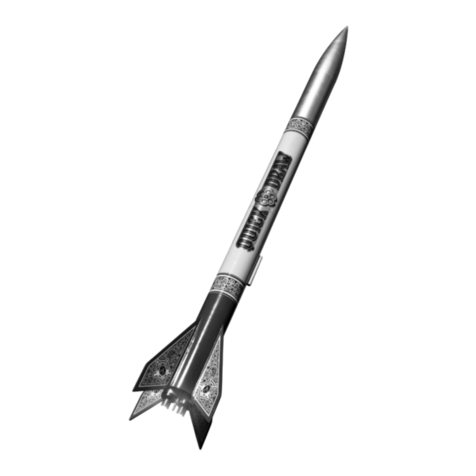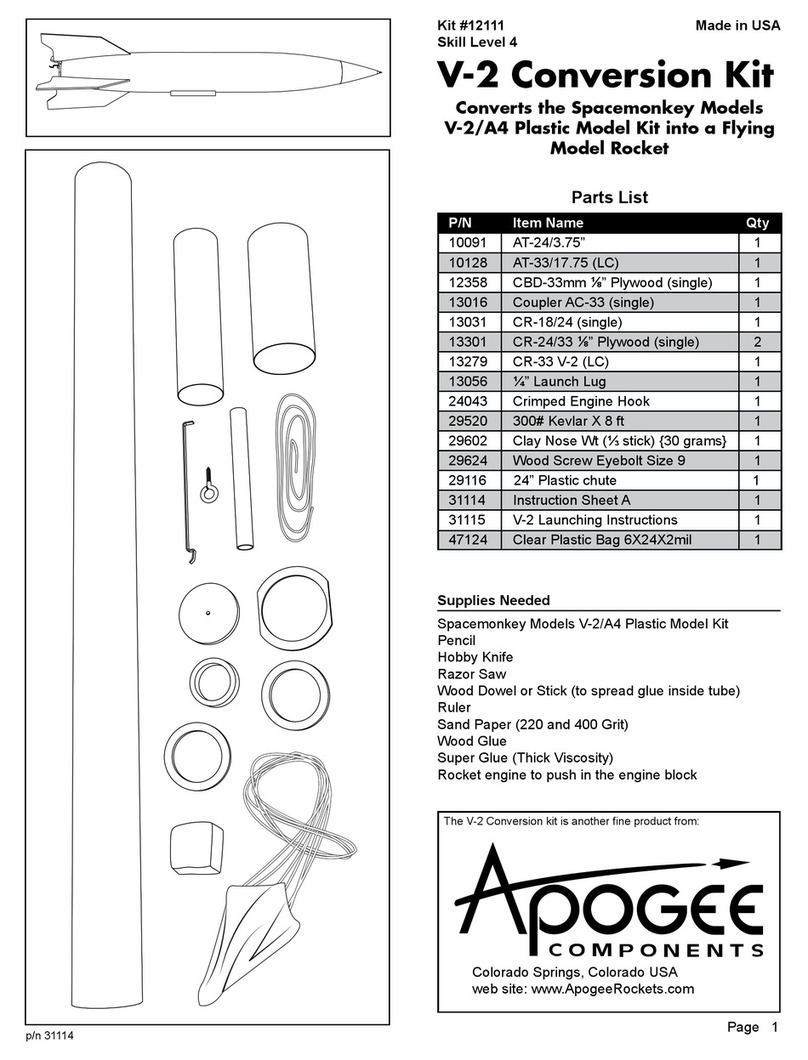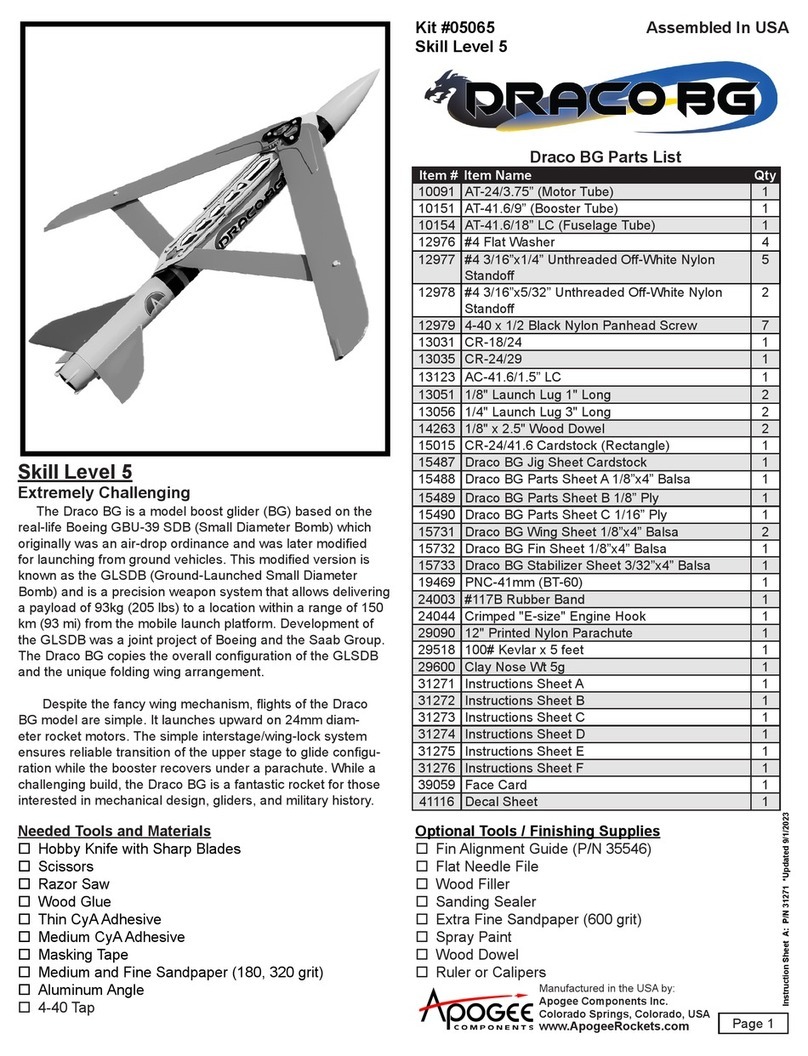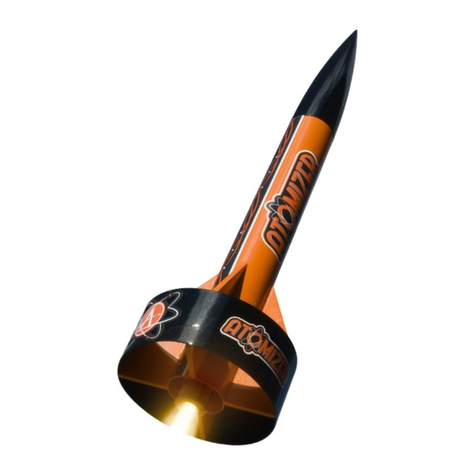
Page 10
Suggestions for Your Fin Shape Science Experiment
How to Eliminate all the Variables That Could Affect Performance
The critical part of any science experiment is to eliminate
all that variables that could affect the results except the
one that you are testing. In this project we’ve tried our best
to eliminate most of the variables that could affect how the
rocket ies, but here are some other suggestions:
Variable: Fin Area
When we created the n patterns, we used a computer
program to determine the exact surface area of the n. We
adjusted the shape to ensure that all the shapes on the
sheets have the same area. If you decide to make your
own, you might have to use a CAD software to nd out the
suface area of your custom shapes too. Make sure your
customized ns have a surface area of 4.09 square inches.
Variable: Fin Span
Another variable that people overlook is how far the n
sticks out from the rocket. This is called the “n span.” The
n span is critical, because it greatly affects the drag on the
rocket. Again, if you decide to create your own custom n
shapes, make sure that the n span distance is 2.5 inches
like the rest of the suggested shapes in this kit.
Variable: Rocket Lift-off Mass
One variable that we have not eliminated in the kit is the
mass of the rocket. As you can guess, the rocket that is
heavier is not going to y as high as a lighter weight one.
Even though the ns have the same area and theoretically
they should have identical weight, the material they are
made from has an effect on the nal weight. The reason
why is that balsa wood is a natural material and one tree
may be denser than another.
In addition, how you attach the ns to the n can tubes
can also affect the weight of the rocket. The amount of glue
you put on when attaching the ns will vary slightly from one
n to another.
Because of the varying mass of n cans, we’ve included
in the kit a small amount of clay weight. Use the weight to
adjust the mass of the rocket prior to installing the rocket
motor.
Here’s a hint: weigh all the n cans separately. Find the
heaviest one, and put that one on the core tube with the
engine mount. Weigh it again and record the mass.
When you y the other n shapes, add a small amount
of clay weight into the payload tube so that the entire rocket
weighs the same as the heaviest n shape. Between ights,
always weigh the rocket and add or remove clay mass so
that the lift-off weight is the same. This will eliminate the
variable of weight and make sure that you’re only testing the
shape of the n.
Also remember to use the same amount of tape to hold
on the nose cone and the n can. It is recommended you
measure the length of tape, and use the same length every
time so any extra length of tape won’t change the mass of
the rocket. We suggest 4.25 inches long.
Variable: Launch Angle
Eliminate this variable by always launching the rocket
with the launch rod pointed straight up. Don’t angle it into
the wind.
Variable: Weather Conditions
This is a hard variable to eliminate. The only way to do
that would be to launch all the n shapes at the exact same
time so that they are all affected by the same weather (wind,
temperature, humidity). This is a great idea, but it is a bit
impractical because it involves a lot of rockets ying at the
same time and much more sophisticated launch equipment.
The next best thing to do is y all the rockets on the
same day. Hopefully that will reduce some of the variables
like temperature and humidity since they probably won’t
vary much between one launch and the next.
The wind will vary between ights. You never know when
a gust of wind will come through the launch area and affect
the trajectory of the ight. Ideally, you want to y on a day
with zero wind. If you have a choice, try to schedule your
launches on a calm day.
If there is any breeze, what you should do is y the
shapes multiple times and average out the results. So if one
shape ew to 200 feet on the rst launch and 220 feet on
the next launch, the average altitude for that shape is 210
feet.
But don’t y the same shape in succession. After each
ight change to a different n shape. Why? Because that
will allow you to test other shapes when the temperature
and humidity are fairly consistent. If you y one shape four
times in succession, it could be a long time before you get
to the next shape. In the mean time, the temperature could
have changed signicantly.
Variable: Rocket Motor Performance
Unfortunately, this one is out of your control. Motors can
vary a little bit in how much thrust they produce. In order to
eliminate this variable, you’ll need to y your rockets many
times and average out the results. Don’t just do one ight
per n shape. The affect of the motor would be too signi-
cant. The more times you y the rocket, the better.
I hope this helps you with your project to nd the best n
shape. Please let us know how your experiment turned out.
www.ApogeeRockets.com
